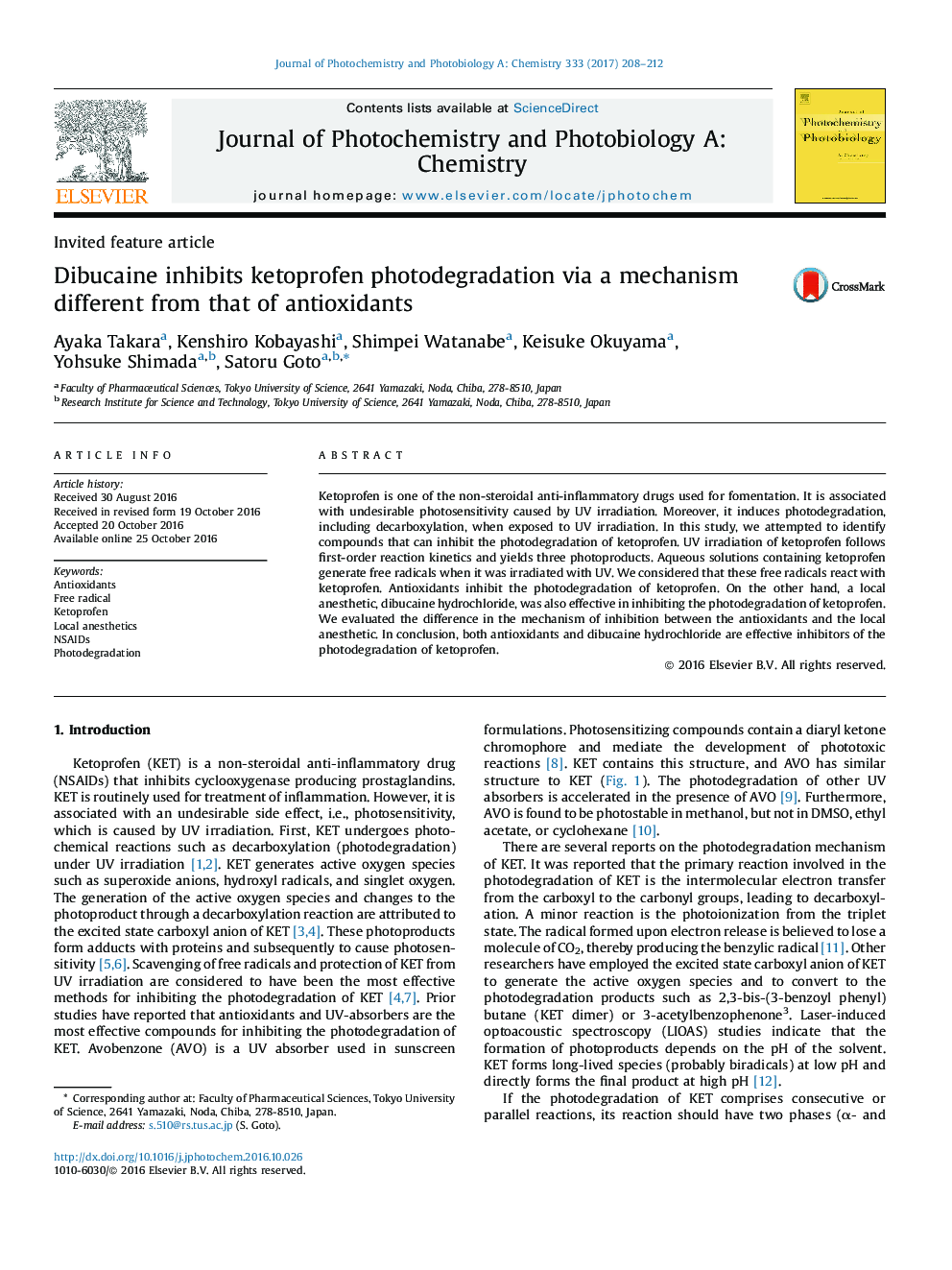| Article ID | Journal | Published Year | Pages | File Type |
|---|---|---|---|---|
| 6452489 | Journal of Photochemistry and Photobiology A: Chemistry | 2017 | 5 Pages |
â¢UV irradiation of ketoprofen follows first-order reaction kinetics and yields three photoproducts.â¢Our results indicate that the antioxidants and local anesthetic dibucaine inhibit the photodegradation of KET.â¢The mechanism of action is different in case of dibucaine as compared to the antioxidants.
Ketoprofen is one of the non-steroidal anti-inflammatory drugs used for fomentation. It is associated with undesirable photosensitivity caused by UV irradiation. Moreover, it induces photodegradation, including decarboxylation, when exposed to UV irradiation. In this study, we attempted to identify compounds that can inhibit the photodegradation of ketoprofen. UV irradiation of ketoprofen follows first-order reaction kinetics and yields three photoproducts. Aqueous solutions containing ketoprofen generate free radicals when it was irradiated with UV. We considered that these free radicals react with ketoprofen. Antioxidants inhibit the photodegradation of ketoprofen. On the other hand, a local anesthetic, dibucaine hydrochloride, was also effective in inhibiting the photodegradation of ketoprofen. We evaluated the difference in the mechanism of inhibition between the antioxidants and the local anesthetic. In conclusion, both antioxidants and dibucaine hydrochloride are effective inhibitors of the photodegradation of ketoprofen.
Graphical abstractDownload high-res image (117KB)Download full-size image
